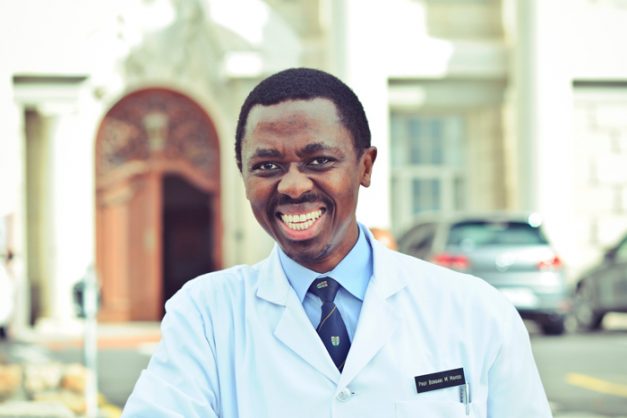By Thandisizwe Mgudlwa
It is reasonable to argue that the South African Schools Football Association (SASFA) is a bedrock of Youth Development and social cohesion in the country.
Sasfa has been in existence for the past 24 years.
But before this, Sasfa had to undergo a metamorphosis from unity stage when fragmented Schools Sport bodies from the previous order Education came together in 1994 to usher in Unity, Participation and Integrated Development under the aegis of the then United School Sport Association of South Africa (Ussasa).
.
According to Sasfa, “Football was part of the 25 active sporting codes. With the demise of USSASA Mother Body, USSASA Football then had to undergo change and was later known as the SA Schools Football Association.”
Sasfa says, schooling, learning and teaching become ineffective when the umbilical cord between academia and extra- mural activities is cut.
“The natural process of schools being the honing ground for the holistic development of the child loses meaning since it has been proven that an active body produces excellent results. It is on this basis that SASFA continues to be catalyst in fostering effective learning and teaching, promoting the culture of education through sport. The creation of sound school football programmes seek to assist in this regard.
The era we live in today necessitates that together as a collective work hand in glove in assisting our future citizens to be organised, responsible to work as individuals as well as part of a collective team. The skills that the child learns in the field of play are guaranteed to help them when they are adults. For example when they gather from various schools, bonds of friendships are cemented and maybe relied upon in the real world at a later stage.”
The SA Schools Football Association runs a number of programmes that seek to introduce all children of South Africa to enjoy participating in organised football whether recreational, motor coordination, developmental, competitive and to keep fit.
The various partnerships that we have forged over the years have yielded positive and impact legacies for the participating schools and players alike. “We have witnessed the upgrading of infrastructure of class rooms, buildings, sports combos, upgrade of security systems and some even went on to purchase vehicles to ferry learners to school tours, games etc,” Sasfa notes.
Sasfa is also very much proud of the history and relationship that it has fostered with SAFA, Department of Basic Education, Sport & Recreation South Africa, SASCOC, and Sasfa’s commercial partners since inception being KFC for the KFC Cup; Cadbury for Chappies Little League; MTN for the MTN u/16 Cup; loveLife Games; Spur Masidlale.
Sasfa’s current sponsors include Danone South Africa for Danone U/12; Nestle for Milo Champs u/13; McDonald’s South Africa for the SASFA McDonald’s U/14 School League; Coca – Cola South Africa for the Copa Coca – Cola U/15 Cup; Metropolitan for the Metropolitan u/16 Cup and the Motsepe Foundation for the SANLAM Kay Motsepe Schools Cup.
Moreover, the association attests, through the above partnerships and collaborations, SASFA programmes have given an opportunity to play an active role to many educators that served as officials in administration and technical aspect of the game, learners as participants and match officials.
The lucky ones went on to ply their football skills in the National Junior Teams, PSL & NFD outfits some even made a mark in the various international tournaments and events.
Meanwhile, even though relations between Sasfa and the mother-body Safa may be at their lowest point, it still does not change the fact that a vision to develop football from grassroots is alive.
SAFA President, Dr. Danny Jordaan says their aim is to see about 5.3 million children involved in football within five years.
SASFA President, Mazibuko says, “People are talking and trying to mislead the country around the number of schools participating or that should participate. The truth is that we have 25 000 schools in the country. However, out of that number, there are not more than 6 000 high schools that participate in the development programmes.
He adds that not all of the 25 000 schools play soccer as there are those that play other sports such as rugby, cricket and hockey.
“You know, we don’t have girls’ leagues in the country or girls’ programmes in the schools, so you don’t use that as a ploy to say that Sasfa is not touching enough schools. What are you doing as a mother body to assist your associate member?” he asked, referring the question to Safa.
Since the election of the new SAFA executive in 2013, Sasfa and Safa have been doing battle over the running of schools football. With SAFA, the mother body, taking the decision to withdraw recognition of the former in 2015.
The matter is currently before the courts.
Speaking last October during the Copa Coca-Cola tournament in Bloemfontein, Sasfa president Mandla “Shoes” Mazibuko said the organisation was open and ready to work with Safa.
“There is no reason we can’t work with Safa. Whose interests are we serving if we are not working with Safa?” he asked.
“This is more about politics than what meets the eye, but, as far as we are concerned, we are working with everybody you see around here [at the tournament], including the departments of education and sports, stakeholders and the teachers’ union. There is no reason we should not work with Safa”.
In 2003, the Chappies Little League, which was relaunched with a R3 million per year sponsorship by Cadbury, surpassed the initial target to register about 2 500 primary schools around the country and amassed 6 023 schools.
As a result of that early success, veteran sports sponsorship consultant Geoff Wald flew to London this week to register the tournament with the Guinness Book of Records as the biggest soccer tournament ever.
The current record-holder listed by the Guinness Book of Records is a tournament held in South Korea that drew 5 000 teams.
“The response by schools was overwhelming and it gives us courage to think what we can do to expand and cover almost every school-going kid in the country,” said Wald.
SOURCE: The African Sun Times
http://africansuntimes.com/2018/05/sasfa-schools-football-a-platform-for-player-development/













